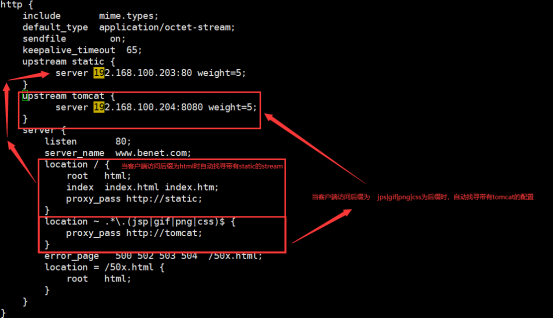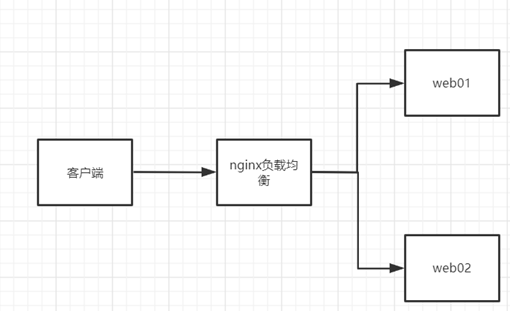最近租了3A的服务器,一直在学习nginx,顺便分享给你们,如果有需要服务器或者哪里不懂的,可以私信我 代理相当于中间商,通过中间商就可以访问到很多资源 nginx的优点: nginx是一个典型的七层lsp,但是也支持四层的 对网络的稳定向依赖非常小,理论上能ping通就能进行负载功能 安装和配置比较简单,测试起来非常方便 nginx可以通过检测端口检测到服务器的内部故障 nginx缺点: nginx仅能支持http,https,和Email协议 对后端服务器的健康检查只能通过端口进行,不支持通过url检测,不支持session保持 1.nginx反向代理,将localtion头部修改为与代理服务器相同的ip地址 比较懂IT的都知道通过curl -I http://IP地址之后的location查看是否为代理服务器 (1)怎么如果修改location呢? 添加一个: 之后重启服务 proxy_pass http://192.168.100.203/abc; proxy_redirect http://192.168.100.203/abc /world; (2.)之后进行验证:
[root@MiWiFi-R4CM-srv ~]# curl -I http://192.168.100.202/world HTTP/1.1 301 Moved Permanently Server: nginx/1.20.2 Date: Mon, 16 May 2022 12:18:17 GMT Content-Type: text/html Content-Length: 169 Connection: keep-alive Location: http://192.168.100.202/abc/ ##如果是对方IP就证明此服务器是个代理 ##但是可以通过上面的模块进行修改,从而达到分不清是不是代理的程度
2.nginx在服务器查看客户端真实IP地址 代理服务器:
location / {
proxy_set_header Host $host;
proxy_set_header X-Real-IP $remote_addr;
proxy_set_header X-Forwarded-For $remote_addr;##这个东西一定要写对,它有可能不会报错,但会使你要看的真实ip成为"-"
root html;
index index.html index.htm;
} proxy_etc_header: 允许重新定义或者添加发往后端服务器的请求头
Host $host
$host就是nginx代理服务器,也就是客户端请求host。
X-Real_IP $remote_addr $remote_addr;的值为客户端的ip
proxy-Forwarded-For 简称XFF头,它代表客户端,也就是HTTP的请求端真实的IP
nginx服务器将最后一个变量在第一个,access_log启用一下
log_format main '"$http_x_forwarded_for" - $remote_user [$time_local] "$request" '
'$status $body_bytes_sent "$http_referer" '
'"$http_user_agent"';
access_log logs/access.log main;
##重点!!!千万不要忘了启用代理到后端的TCP链接超时
proxy_connect_timeout time;
它的语法
proxy_connetc_timeout 60s; 超时时间为60秒
max_conns 限制最大连接数
3.配置正向代理:
(1)将服务器设置为只允许代理服务器(100.202)访问
location / {
charset utf-8,gbk;
allow 192.168.100.202;
deny all;
root html;
index index.html index.htm;
}(2)在代理服务器中加入
location / {
proxy_pass http://$http_host$request_uri; ##$http_host客户端请求的目标ip地址##$request_uri;请求的资源
> root html;
index index.html index.htm;
}
(3)在浏览器设置中写入代理服务器ip,然后进行访问服务器验证


4.nginx负载均衡 (1.)文件的配置:写在server上面
 max_fails=1 设置允许请求代理服务器失败的次数,默认为1。
fail_timeout=10 设置经过max_fails失败后,服务暂停的时间,默认是10秒
weight=1 权重,看哪个服务器配置好可以多加权重接受的请求多
(2.)在server最后面可以通过添加变量修改服务器取值
状态 概述
down 当前server暂时不参与负载均衡
backup 当前server作为备份,等有损坏服务器的时候上场
5.nginx负载调度策略
调度算法 概述
轮循 按时间顺序逐一循环分配到不同后端服务器(默认)
weght 加权轮循,weght值越大,被分配到的几率更大
ip_bash 每个请求按照IP的hash结果分配,这样来自同一IP的股东访问一个后端服务器
url_hash 按照访问URL的hash结果来分配请求,是每个URL定向到后端服务器
least_conn 最少链接数,那个机器链接数少就分发
hash关键数值 hash定义的key
6.nginx的stream调度
(1.)添加模块(--with-stream),编译安装
max_fails=1 设置允许请求代理服务器失败的次数,默认为1。
fail_timeout=10 设置经过max_fails失败后,服务暂停的时间,默认是10秒
weight=1 权重,看哪个服务器配置好可以多加权重接受的请求多
(2.)在server最后面可以通过添加变量修改服务器取值
状态 概述
down 当前server暂时不参与负载均衡
backup 当前server作为备份,等有损坏服务器的时候上场
5.nginx负载调度策略
调度算法 概述
轮循 按时间顺序逐一循环分配到不同后端服务器(默认)
weght 加权轮循,weght值越大,被分配到的几率更大
ip_bash 每个请求按照IP的hash结果分配,这样来自同一IP的股东访问一个后端服务器
url_hash 按照访问URL的hash结果来分配请求,是每个URL定向到后端服务器
least_conn 最少链接数,那个机器链接数少就分发
hash关键数值 hash定义的key
6.nginx的stream调度
(1.)添加模块(--with-stream),编译安装
./configure --prefix=/usr/local/nginx --with-http_ssl_module --with-http_realip_module --with-stream
make && make install (2.)config文件配置 (3.)保存重启ngixn,然后访问代理服务器实现效果 7.nginx动静分离 (1)实验准备:一个nginx代理服务器,和一台nginx对外服务器,一台tomcat服务器 (1.1)先搭建一个tomcat服务器:上传一个tomcat文件(tomcat需要java环境)
[root@cpe-66-66-66-188 ~]# tar zxf jdk-8u91-linux-x64.tar.gz -C /usr/local/ ##tomcat需要java环境 [root@cpe-66-66-66-188 ~]# echo "PATH=$PATH:/usr/local/java/jdk1.8.0_91/bin >> /etc/profile" ##将java环境导入配置文件 [root@cpe-66-66-66-188 ~]# source /etc/profile ##刷新一下 [root@cpe-66-66-66-188 ~]# tar zxf apache-tomcat-8.5.16.tar.gz -C /usr/local/ ###将tomcat文件解压到/usr/local下 [root@cpe-66-66-66-188 ~]# /usr/local/apache-tomcat-8.5.16/bin/startup.sh ##开启tomcat (1.2)验证tomcatl

(2)因为前面已经有了nginx服务,就不做如何搭建演示了
(3)在代理服务器上修改config文件:

http { include mime.types; default_type application/octet-stream; sendfile on; keepalive_timeout 65; upstream static { server 192.168.100.203:80 weight=5; } upstream tomcat { server 192.168.100.204:8080 weight=5; } server { listen 80; server_name www.benet.com; location / { root html; index index.html index.htm; proxy_pass http://static; } location ~ .*.(jsp|gif|png|css)$ { proxy_pass http://tomcat; } error_page 500 502 503 504 /50x.html; location = /50x.html { root html; } } }







